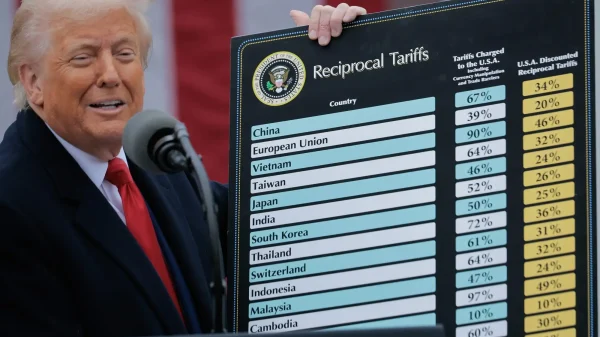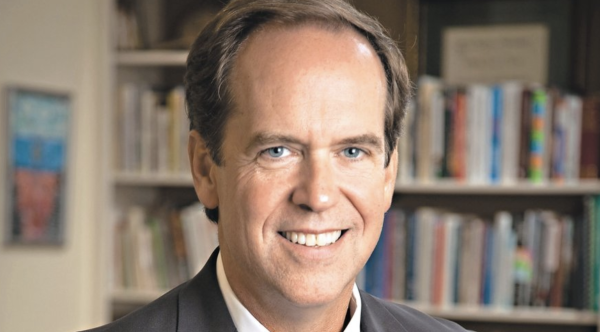Risk Committee releases new parking restrictions
School shootings and gun violence in general dominate the news cycles, but shootings aren’t the biggest risk to everyday citizens. According to 2016 CDC statistics, the third leading cause of death are car accidents. General homicides don’t even rank in the top 10.
Anecdotally, many students can attest to feeling like they were in danger on campus due to a motor vehicle.
“I was walking across the crosswalk [in front of senior lot] and this parent was going relatively fast,” said senior Macy Adams. “I was more than halfway across, but they just didn’t stop.”
Fellow senior and swimmer Cecie Bassett also has had unpleasant experiences with on campus drivers.
“Once last year I was walking across the street to get from Junior Lot to the Middle School and this parent sped past me,” said Bassett. “So I just had to stop in the middle of the crosswalk.”
In an attempt to curb scenarios like these, the Risk Committee has approved numerous measures that were then presented to a Senior Administration Team, consisting of heads of all three divisions, Thad Persons, Tim Downes, Toni Boyd, Bob Ryshke, Emilie Henry and Marjorie Mitchell. Among these measures were new crosswalks, striping near stop signs, and a relatively unpopular decision to restrict athletic after school parking in Turner. Previously, a common practice was for students to move their cars from Senior Lot or the back tennis courts to behind Turner Gymnasium before practice, so that their cars would be closer to their practices.
“The walk from back from Turner to senior lot probably takes me at least 10 minutes, and it’s the winter so my hair freezes on the way back,” said senior Cecie Bassett. “Also two days a week I have soccer practice and I have to leave swimming early, so I’m already leaving 30 minutes early from swimming so I don’t want to leave earlier just to walk back to senior lot.”
Bassett isn’t alone with her disapproval for the new measures.
“I don’t drive, so it doesn’t affect me personally, but some of my friends give me rides from Senior Lot to Turner, and I don’t really like it. I think it’s a bandaid over a bulletwound. It’s not actually getting to the real problem. Let us drive to Turner, but reprimand the specific drivers who are unsafe,” said senior Daniel DeSouza. “[One male senior] drives super fast in Senior Lot and I do get scared when I see him. I know what his car looks like so I can be alert when I see it.”
With nearly 1300 students learning on campus every day, Westminster has its share of traffic, especially after classes end, between 3:00 to 3:20pm. This extra traffic combined with one lane roads extrapolates driving hazards.
“When Lower School is doing their carpool, parents have already lined up on the side of the road, halfway into a lane,” said administrative assistant and member of the Risk Committee Kelley Day. “This causes anyone who is trying to drive in traffic to pull into an oncoming lane. We realized that that was mostly going on for students who were moving their cars on campus. It’s a combination of inexperienced driving and these dangers.”
Most students are certainly wary of these dangers, but remain skeptical restricting after school parking is the best measure.
“I don’t think it’ll make anything safer because it’s producing more pedestrians. More people will be walking and the parents will still be driving,” said Bassett. “The only time I’ve almost been hit was due to a parent. I think it’s pointless for the kids not to be able to drive.”
The practicality of forcing students to park away from their practices has also been scrutinized by faculty and staff.
“I think it’s safer for students to park closer to their location, because since Daylight Savings Time makes it darker earlier, it’s too far of a distance for students to walk to go back from Turner to whatever lot they are in,” said Glenn Institute Coordinator Jessica Dent.
However, members of the Risk Committee don’t receive raises for making students miserable, in fact they put new proposals through lengthy vetting processes. The specific proposal was submitted in the spring of last year, and was only enacted a couple weeks before Thanksgiving Break.
“There’s a lot of discussion in both levels about what are the problems, what are the mitigating factors, what are the advantages and you really just have to weigh it all,” said Day.
While the cons are clearly seen by students, the pros include significantly reducing student drivers and making on campus driving a more pleasant experience.
“The number one pro was looking at the big picture. We were trying to look at what happens during a short period of time on campus and how it affects Middle school and Lower school carpool, along with other events on campus,” said Risk Committee member Mike Issiac. “It’s not an isolated thing, it’s looking at the big picture and how the whole campus flows during a 2 hour time frame.”
Regardless of a cost-benefit analysis, fingers will still be pointed towards the perceived root of the problem.
“I feel unsafe when the parents are driving around, but that’s about it,” said senior basketball player Jack Minson. “I don’t think it’ll be any safer honestly, Seniors are responsible drivers. Juniors are the real problem.”




